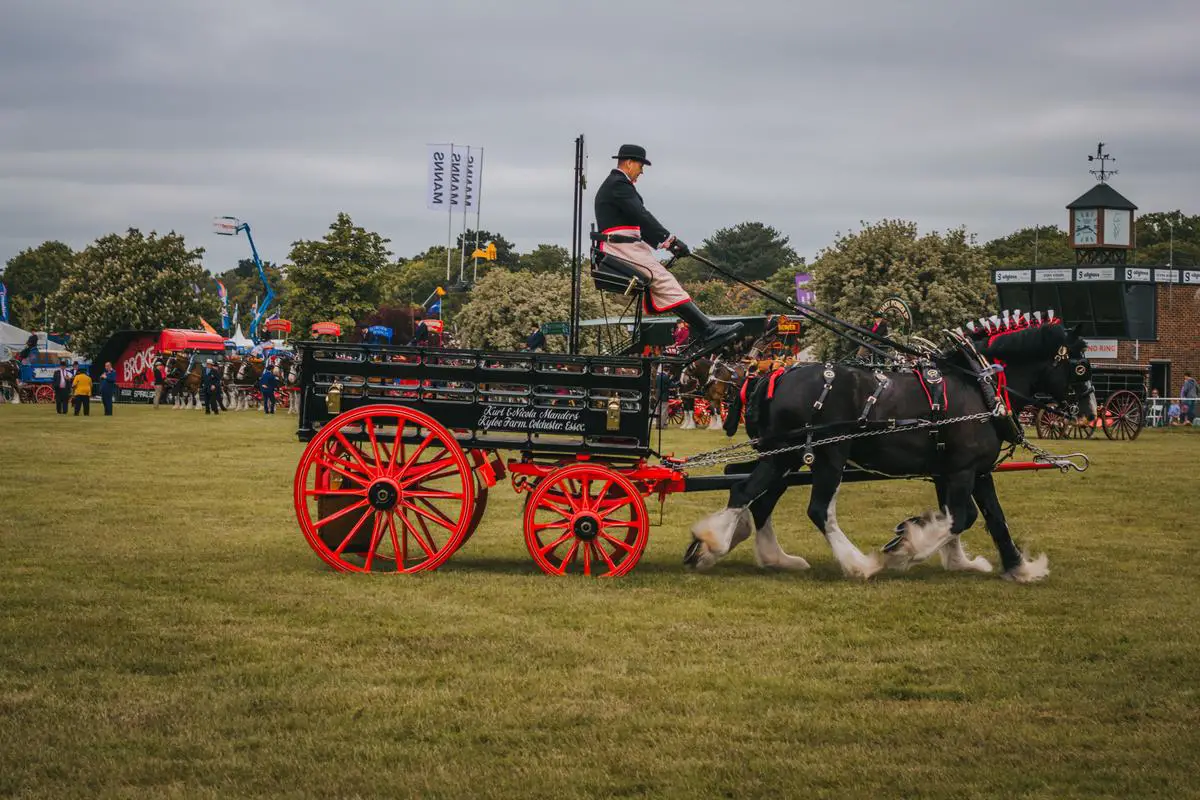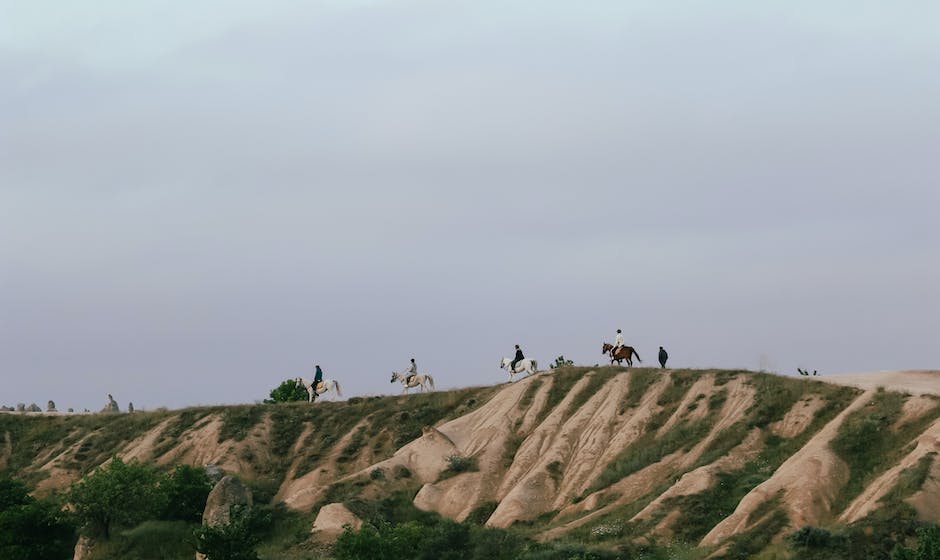In the realm of equine giants, the Shire horse holds a distinguished stature. Known for their towering height and imposing bulk, Shire horses hearken back to an era of knights and castles, their sturdy frames an echo of a time when horsepower was a literal necessity. This breed, originally from the British Isles, stands as one of the largest in the world, presenting an image of remarkable power and majesty. Not just their size, but their incredible endurance, strength, and good-natured temperament have earned them the admiration of horse enthusiasts and general public alike. In the following sections of the discourse, we will unravel the details about the size of Shire horses, compare them to other breeds and familiar objects, explore the factors influencing their size, and delve into the implications of their stature.
Table of Contents (Horspedia)
Overview of Shire Horses
Overview of Shire Horses
Shire Horses are hailed as one of the largest breeds of horses in existence. Rooted in the fertile pastures of the United Kingdom, this breed’s history dates back to the medieval times when they were used as war horses. Since then, this physically powerful breed has also been strategically deployed for agriculturally rigorous tasks including plowing and hauling.
Distinguishing physical features set Shire horses apart from other breeds. They have broad, strong backs and short legs that are muscular and fit for enduring heavy tasks. Another striking feature is the presence of large feathered ‘hocks’ around their feet which are essentially long, hair-like structures that add an aesthetic touch to their appearance. Their coat colors may range from black, bay, or grey, with rare instances of chestnut or roan.
Shire Horse Size in Feet
Offering a formidable stature, Shire horses are typically larger in size than most horse breeds. On average, a mature Shire horse’s height ranges from 17 hands (5.7 feet or 1.73 meters) to 19 hands (6.3 feet or 1.93 meters) tall at the withers, the point on a horse’s back located between the shoulder blades. However, some Shire horses are known to surpass this average size, with the tallest recorded Shire measuring a whopping 21.2 hands (7.1 feet or 2.2 meters).
Demonstrating similar grandeur in body length, a Shire horse can measure between 8 to 10 feet (about 2.5 to 3 meters) long from chest to rump. Their weight is another evidence of their muscular build, generally ranging from 1,800 to 2,400 pounds (approximately 817 to 1089 kilograms).
The enormity of a Shire horse extends even to its hoof, which can reach up to 10 inches (approximately 0.25 meters) in diameter.
Despite their giant size, Shire horses are renowned for their tranquil and gentle nature, often contrasting with their immense physical presence. Their robust and serene nature coupled with their massive size, make them a preferred breed among horse enthusiasts, veterans and beginners alike.
In conclusion, Shire Horses embody strength, endurance and a kind spirit, with their significant size contributing greatly to their alluring appeal and their wide utility in work and recreational settings.

Shire Horse Size in Context
Understanding the general size of a Shire Horse
Shire horses are revered for their extraordinary size, which often overshadows even other large horse breeds. A Shire horse’s height typically falls between 17 and 19 hands (approximately 5.7 to 6.3 feet) at the withers, establishing them as the tallest horse breed on average. Remarkably, the tallest recorded Shire horse attained an exceptional 21.2 hands or about 7 feet at the withers.
When considering weight, Shire horses are serious heavyweights too. An average mature Shire horse can weigh between 1,800 to 2,400 pounds, with some even achieving a formidable weight of up to 2,800 pounds.This places them among the heaviest horse breeds.
Comparing Shire Horse Size to other Horses
Shires are notable for their size even when compared to other large horse breeds, such as Clydesdales and Belgian horses. Clydesdales, while substantial in size, generally range from 16 to 18 hands high (5.3 to 6 feet) and weigh 1,800 to 2,000 pounds – smaller in both height and weight than Shires. Belgians, another heavy breed, are comparable in weight to Shires, often ranging from 1,800 to 2,200 pounds, but they typically stand only 16 to 17 hands high (5.3 to 5.7 feet).
Shire Horses in Everyday Terms
To put the size of a Shire horse in perspective with common objects, consider that the average height of an adult human male in the United States is approximately 5.9 feet. A shire horse, at a height of 5.7 to 6.3 feet at the withers, stands taller. If we were to account for their head and neck, a Shire horse’s full height could be comparable to a single-story building. In terms of weight, Shires weigh more than most small cars. A Mini Cooper, for instance, weighs in at about 2,500 pounds.
Understanding Shire Horse Size
The grand scale of the Shire horse isn’t simply awe-inspiring. Historically, Shire horses’ colossal size held a practical purpose—it enabled these magnificent animals to haul heavy cargo and carry out arduous farm tasks. Their impressive strength and persistence are equal demonstratives of their worth, just like their imposing height and hefty weight.

Factors Influencing the Size of Shire Horses
The Role of Genetics in the Size of Shire Horses
Genetics is the leading determinant of the Shire horse’s size. Careful breeding selection is indispensable, with breeders typically favoring larger horses to further propagate and augment the gene for outsized physique within the species. Shire horses generally stand at 16 to 18 hands (64 to 72 inches) tall at the shoulder. However, certain males can even grow to a staggering 20 hands, accompanied by a substantial corporeal bulk. As the breed is recognized for its height and power, genetics forms a crucial aspect of upholding these traits.
Diet: Fuel for Growth and Development
A Shire horse’s diet profoundly contributes to its final size. To grow into a large, healthy animal, a Shire horse requires a well-balanced diet rich in nutrients, particularly during its formative years. As herbivores, horses rely on a diet of grains and grasses to gain the needed nutrients. A mature Shire horse typically consumes between 20 to 25 pounds of hay and two to five pounds of grains per day. Inadequate nutrition or poor diet quality can limit growth and potentially keep the horse from reaching its maximum genetic potential size.
Environment: A Catalyst for Growth
The horse’s environment can significantly impact its growth and overall size. Like most living creatures, horses need a stress-free environment to thrive. Constant stress can interfere with a horse’s growth and development, potentially stunting growth and causing health problems that hamper a horse’s size. Access to plenty of space for exercise also promotes strong muscular growth, necessary for Shire horses known for their significant muscle mass.
Deviation from Average Size
While genetics, diet, and environment heavily contribute to a Shire horse’s size, there may be occasional deviations from the average. These variations can be due to inherent genetic fluctuations, individual health issues, or significant differences in nutritional intake and environmental conditions. It is also crucial to note that although Shire horses are bred for their size, not all Shire horses will reach the same height or body structure as others. These variations add to the diversity within the breed and should not be mistaken as a sign of bad health or inferior care.
When considering the size of a Shire horse, one cannot overlook the influence of genetics, diet, and environment. These elements play a crucial role in the physical development of these horses. By understanding how these factors come into play, one can offer the optimal care for their Shire horses, ultimately boosting their growth potential.

Importance and Implications of Size
An Introduction to the Impressive Size of Shire Horses
Known as the largest horses in existence, Shires are reputed for their remarkable size. The average height of these powerful creatures varies between 17 and 19 hands, equivalent to about 68 to 76 inches, at the withers – the elevated part between their shoulder blades. To clarify, this reaches a height of roughly 5.6 to 6.3 feet. Impressive records also showcase specific Shire horses that have attained a pit-stopping height of 21.2 hands or 7 feet at the withers. Besides their towering heights, the substantial body weight of these creatures, ranging from 1800 to 2400 pounds, contributes to their awe-striking presence.
Health Implications of a Shire Horse Size
The massive size of the Shire horse is not without its health implications. Shire horses, like other large breed horses, are prone to certain health conditions, such as osteoarthritis and laminitis. Both these conditions are related to the stress placed on the lower limbs due to the horse’s enormous weight. Another prevalent health issue in large horses, including Shires, is Equine Metabolic Syndrome, which can lead to obesity and laminitis. With proper care, a healthy diet, and regular exercise, these health challenges can be managed effectively.
Lifespan and Capabilities: link to Size
Interestingly, despite its size, the lifespan of a Shire horse ranges between 25-30 years, which is similar to that of smaller horse breeds. Their immense strength and power, a direct consequence of their size, makes them indispensable workhorses. Shire horses are well-respected for their ability to pull significant weights, a reason why they were used extensively for agricultural purposes and transport in the past. Today, they are often chosen for heavy haulage tasks, parades, and often for showcasing in exhibitions for their majestic size and calm demeanor.
Myths and Misconceptions about Shire Horse Size
A popular myth about Shire horses is that their size makes them slow and clumsy. While it’s true that they may not possess the speed of smaller, lighter breeds like the Thoroughbred, Shire horses are well-balanced and move with a surprisingly graceful and rhythmic gait. Their size does not impede their capability to perform tasks requiring agility.
Also, it is often assumed that bigger horses require proportionately more food. In fact, the Shire’s feed requirement may not be as extravagant as many presume. Shire horses do require more feed than smaller breeds, but not in direct proportion to their size. They have a slow metabolic rate and are known for being “easy keepers”.
Common Questions about Shire Horse Size
One question frequently asked is, “Is larger always better?” In terms of strength and power, yes. A larger Shire horse can haul heavier loads. However, a larger horse may also experience more health issues related to their size.
Another common question is, “Do they grow at the same rate as smaller horse breeds?” Shire horses mature at a slightly slower rate than smaller breeds, reaching full size at about five to six years of age.
In conclusion, the Shire horse’s immense size is both a boon and a battle. It endows them with impressive strength and power, but also predisposes them to various health challenges. Yet, these equine giants can lead long, productive lives with proper care and management.

Photo by josephineamaliepaysen on Unsplash
Understanding the impressive stature of the Shire horse opens up a newfound respect for these equine giants. Their substantial size is not only a spectacle but also a testament to their historical roles and genetic legacy. Several factors play a part in shaping their dimensions, from genetics to diet and environment, each contributing to the size spectrum you can find within the breed. Ultimately, the large size of Shire horses bespeaks a fascinating cocktail of nature and nurture. The health, lifespan, and abilities of these horses are all influenced by their stature, giving a clue to the myriad complexities underlying this majestic creature. Decoding the implications of their size enhances our knowledge not only about Shire horses but also about the myriad ways we interact and understand the animal kingdom.